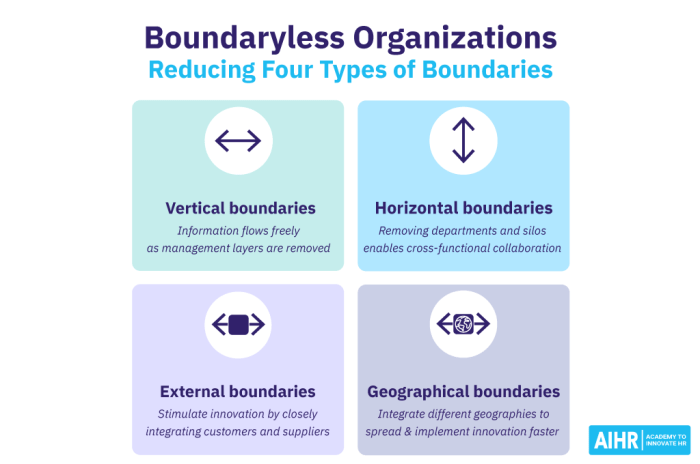The virtual corporation expands the traditional boundaries of an organization. – The virtual corporation, a transformative concept, expands the traditional boundaries of an organization, blurring the lines between physical and virtual workspaces. This innovative model challenges conventional organizational structures, offering unparalleled flexibility, adaptability, and access to a global talent pool.
Virtual corporations leverage technology to overcome geographical barriers, enabling seamless communication and collaboration among distributed teams. They embrace remote work, empowering employees with greater autonomy and work-life balance. By breaking down physical boundaries, virtual corporations unlock new possibilities for innovation, growth, and competitive advantage.
Expanding Boundaries of Organizational Structure: The Virtual Corporation Expands The Traditional Boundaries Of An Organization.

Traditional organizational structures often impose limitations on expansion and adaptability. Virtual corporations, however, break down these barriers by enabling remote work, distributed teams, and flexible organizational structures.
Examples of successful virtual corporations include Zapier, Automattic (WordPress.com), and Buffer, which have expanded their operations globally without the constraints of physical offices.
Impact on Communication and Collaboration
Virtual corporations face challenges in communication and collaboration due to the lack of face-to-face interactions. However, they overcome these challenges through technology.
- Instant messaging and video conferencing platforms facilitate real-time communication.
- Collaboration tools such as project management software and shared workspaces enable seamless teamwork.
- Virtual meetings and online events promote inclusivity and participation from remote team members.
Flexibility and Adaptability
Virtual corporations are inherently more flexible and adaptable than traditional organizations due to their distributed nature.
- Remote work arrangements allow employees to balance work and life commitments.
- Distributed teams can access a wider pool of talent and expertise.
- Virtual corporations can quickly adapt to changing market conditions by adjusting their workforce and operations remotely.
Talent Acquisition and Retention, The virtual corporation expands the traditional boundaries of an organization.
Traditional organizations face challenges in talent acquisition and retention due to geographic constraints and competition.
Virtual corporations can access a wider pool of talent by hiring remote workers from diverse locations.
- Flexible work arrangements and remote work opportunities attract top talent.
- Virtual corporations can offer competitive compensation and benefits packages to retain employees.
Challenges and Limitations
Virtual corporations face challenges such as maintaining team cohesion, ensuring data security, and managing employee well-being.
- Lack of physical interactions can lead to communication gaps and reduced social connections.
- Data security risks can arise due to remote access and distributed workforces.
- Employees may experience isolation and burnout due to the absence of traditional office environments.
FAQ Summary
What are the key benefits of a virtual corporation?
Virtual corporations offer increased flexibility, adaptability, access to a global talent pool, and reduced operating costs.
How do virtual corporations overcome challenges in communication and collaboration?
Virtual corporations leverage technology to facilitate seamless communication and collaboration, such as video conferencing, instant messaging, and project management tools.
What are the potential drawbacks of operating as a virtual corporation?
Potential drawbacks include difficulties in building company culture, managing remote teams effectively, and ensuring data security.

